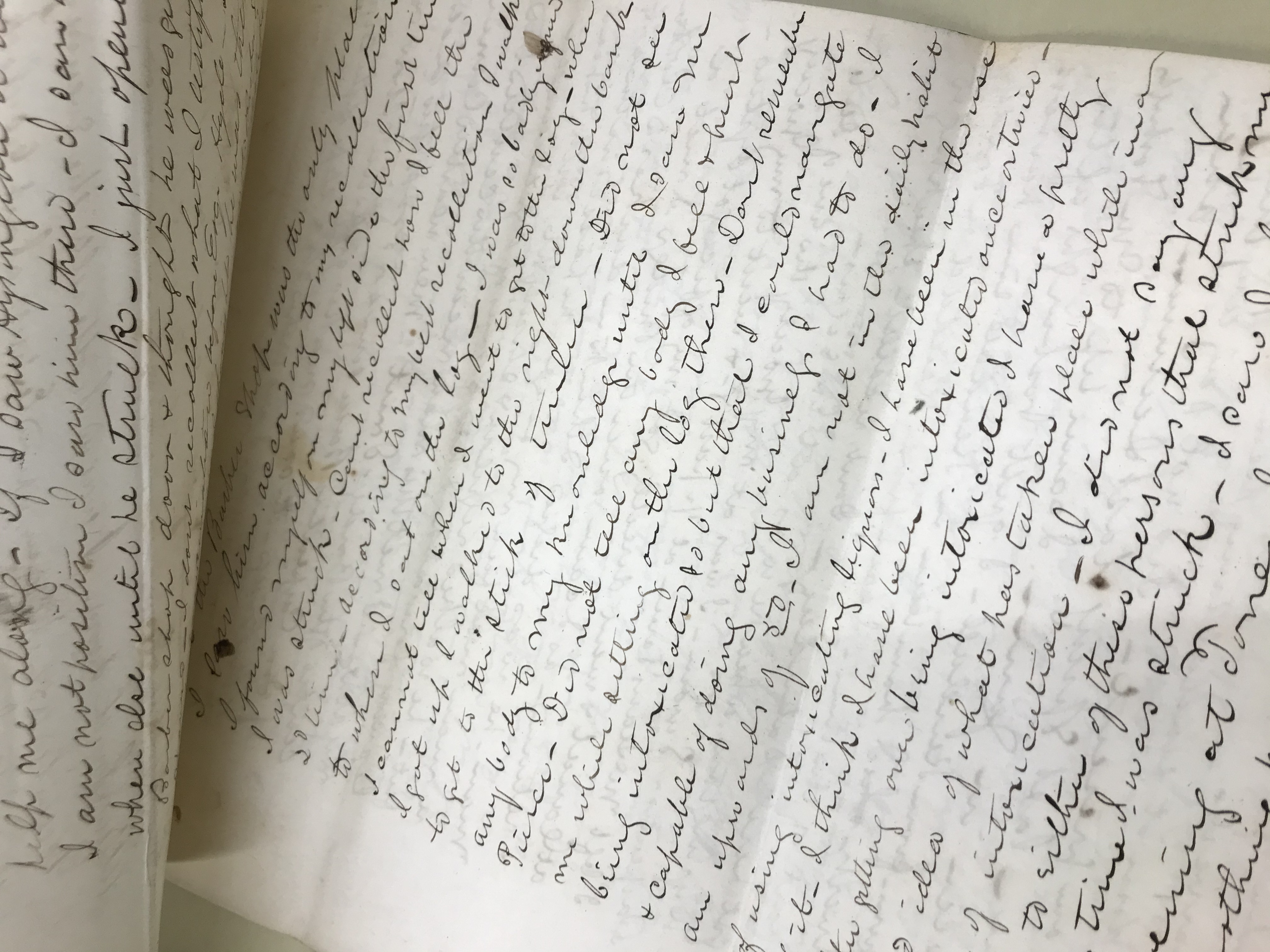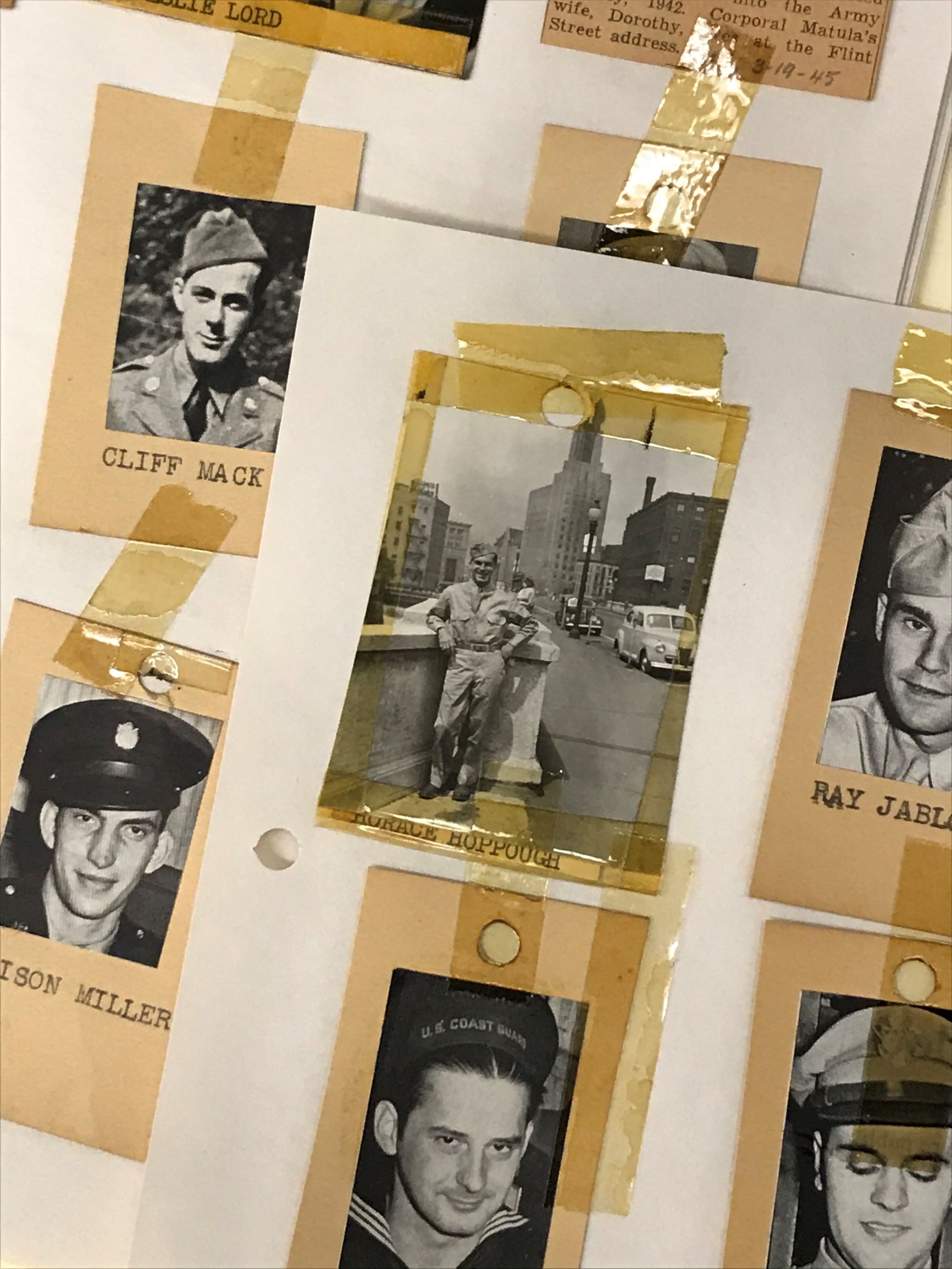On Ghosts

Archives are an excellent place to find ghosts.
There’s a kind of chill you get, working with Special Collections, sometimes. It’s not a sudden draft, or a cold spot- it’s a shiver, a moment of recognition, like a hand gently placed on your shoulder, or the feel of another body standing next to yours. When you pick up a picture from sixty years ago and realize that the man there is standing in the same spot where you wait for the bus every morning, it’s hard not to feel like he might still be there, next time you take the 18 inbound, like he could ask you what you think of this weather today. When you read the documents from a court case and the transcript captures the way someone in 1851 stumbled over their words and told their story slightly out of order, and you can hear their voice so well you’d swear you just heard someone tell this story the other day, it’s a kind of echo.

[Transcript of testimony against Philip Hysingcourt, who was charged with attacking Allen Smith on Scottsville Road in 1851]
People leave imprints of themselves on the materials they create- like ghostly handprints on a mirror- and like ghosts, those touches of people’s experiences and personalities have a way of sticking around and coming back. Things echo in a unique way in Special Collections, particularly. In another place, an echo might just be a disembodied voice- a story without an anchor- but here, the voices are still anchored in the materials themselves. Their hands might be right where yours are, holding the paper just the same way. And like ghosts, the voices in these materials still want to be heard- still have things to say, things to remind us of. They bring up pasts that don’t seem to be quite as “past” as we’d think, and make themselves part of the present again, sometimes in what can seem like the most unlikely of ways. This is both the purpose and lesson of archives; that history is always closer and more relevant to the present than we think, and that disembodied voices and shadowy figures loom large in both the stories we tell about ourselves, and in the waking daylight world. Ghosts have weight. The echoes of events never really wash out of the places they happened in.

[Private Horace J. Hoppough of the Taylor Instruments Co. stands on the bridge at the corner of Broad St. and South Ave, c. 1944]
I am especially excited to bring this first blog entry of the new Special Collections highlight series out in a season where it feels right to talk about ghosts, because much of what I intend to talk about in this series is ghosts, of one sort or another- the kind that won’t stay quiet, that wait around, that come back again and again to ask us questions and remind us of events that shouldn’t be forgotten. Every archive is full of them. Each month I’ll be featuring something interesting from one of our collections, either something new making itself heard here for maybe the first time, or something we’ve had for a while that has something to say. I’ll talk a little bit about the material and the collection it’s from, and bring up some of these messages that echo particularly loudly.
And I hope, particularly, that you’ll enjoy hearing a ghost story or two- and feeling the connection to those echoes, like a light tap on the shoulder, when you thought no one was there.
Lev Earle – they/them
Special Collections Processing Archivist, RBSCP
The Special Collections Processing Archivist prepares, organizes, and describes new and legacy collections for researcher use, making collection information searchable in the library catalogue. Have a question about something mentioned in this article? Email learle@library.rochester.edu.


